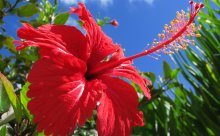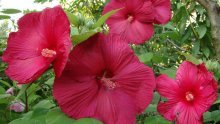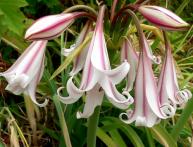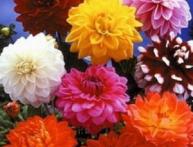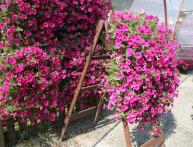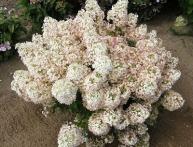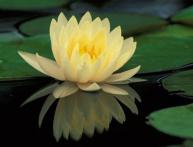Swamp hibiscus - elegant exotic in the garden and at home
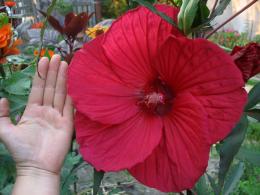
Hibiscus marsh plant is valued by flower growers for its easy care, long-lasting abundant flowering and impressive decorative properties. The subtropical shrub has become familiar in the northern regions and is grown as a house or garden plant. In open ground, especially large and spectacular specimens are obtained. Proper placement, simple agricultural technology and the admiration of connoisseurs of exotic beauty are the conditions for obtaining a luxurious perennial.
Content:
- Origin and description of the species
- Advantages and features of the type
- Features of growing swamp hibiscus
- Diseases and pests
- Benefits and applications in cooking and traditional medicine
Origin and description of the species
Swamp hibiscus is a member of the genus Hibiscus of the Malvaceae family. More than 200 species of plants are known. Under natural conditions it grows in the tropics and subtropics, on well-moistened, drained soils. This feature gave it its name - swamp. The external similarity with garden mallow also gave it an unofficial name - swamp mallow.
The growing area covers the regions of South America and Southeast Asia. Forms extensive thickets in river floodplains. In some areas of Haiti, Brazil, and Malaysia it is revered as a national plant. Plays a significant role in the customs and culinary traditions of peoples.
It is cultivated in gardens in southern Europe, central Russia, Ukraine, and the Russian Far East.Enthusiasts are getting good results further north, even in the Yaroslavl region and southern Siberia.
Description of the plant
Perennial shrub, deciduous or evergreen. In favorable conditions it reaches a height of 2 - 2.5 meters, crown diameter - 1.5 - 1.8 meters. Compact ones have been developed varieties for cultivation in harsh climatic conditions and in pot culture. The stem is straight, woody in older specimens. The leaves are simple, on a petiole, the color of the upper part is dense green, the bottom of the leaf blade is light pubescent.
The plant forms an abundant green mass. The flowers are typical of Rosaceae. Single, semi-double or terry. The color palette ranges from soft pink tones to rich purple with splashes.
They live for one day, then fade away. Many new flowers bloom daily. Flowering continues from the beginning of summer until the first autumn cold snap.
Decorative effect is provided by beautiful greenery, eye-catching color and size of flowers. Despite the fact that in swamp hibiscus they are half as large as in other varieties, they still reach 15–18 cm in diameter. The disintegrating fruit capsules consist of five chambers, each with separate valves. A large number of pubescent or smooth seeds with a dense shell ripen in the chambers.
Advantages and features of the type
Advantages of swamp hibiscus in open ground:
- grows in marshy soils, where other shrubs cannot survive
- not afraid of high groundwater
- tolerates light shade, while the intensity of flowering decreases
- frost-resistant
- pruning leads to an increase in the number of inflorescences
When grown in pots, the following features are noted:
- the soil should be loose, saturated with humus
- It is important to keep the soil moist
- does not tolerate direct bright lighting, shading is required, the best placement is near eastern and western windows
- it is necessary to provide a higher temperature than in open ground, higher in summer than in winter months
- when the temperature drops to 10 - 12 degrees or more, it can lose leaves
- in favorable conditions it blooms most of the year
- in the summer they take it out onto the balcony, into the garden, onto the terrace
In both cases it is useful for southern exotics:
- remove faded flowers, this will allow you to achieve abundant flowering and preserve the aesthetic appearance of the shrub
- if you want to get ripened seeds for subsequent planting, leave a few old flowers on the plant
- “feed” needs to be done carefully, does not like excess fertilizer
- Life expectancy of marsh mallow is up to 20 years
Features of growing swamp hibiscus
To obtain a beautiful, healthy plant, simple techniques are used.
Hibiscus is propagated by seeds or cuttings
Sow in January - February. Previously seeds carefully cut or pierce (scarify), soak for 12 - 48 hours. Prepare a substrate from 1 part sand and 2 parts peat. The seeds are laid out on the surface of the soil and lightly pressed down.
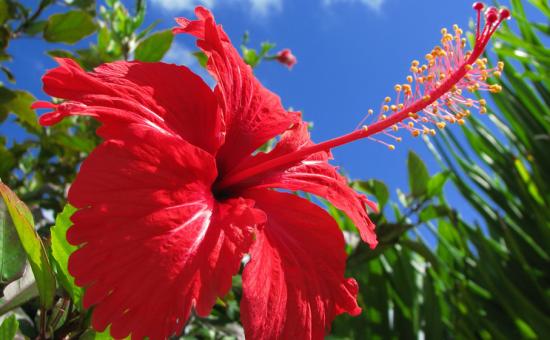
Cover the container with film or glass. Ventilate the greenhouse every day and moisten the substrate if necessary. The shelter is removed after germination. When 3-5 true leaves develop, the seedlings dive into separate pots filled with the same soil with the addition of humus. Subsequently, in the spring, transshipment is carried out in containers 1-2 cm larger.
Cuttings are prepared in late summer by cutting twigs with 3-4 internodes; the sections are treated with growth stimulants.The composition of the substrate is described above. The cuttings are placed at one end in moist soil and left until rooting. They are covered with film, glass or plastic over the cuttings - in the form of a greenhouse.
Soil, fertilizing and watering
To plant hibiscus in a permanent place, prepare the soil:
- 4 parts turf soil
- 3 parts humus or leaf compost
- 1 part sand
It is useful to add charcoal to prevent rhizome diseases. Vermiculite is placed at the bottom of the container if desired. Hibiscus does not tolerate excess fertilizer well; in his case, it is better to underfeed. Nitrogen fertilizers are applied in the spring, potassium and fluoride fertilizers are applied in the fall. If possible, replace them with organic matter.
A houseplant or greenhouse plant is watered regularly and abundantly in spring and summer, maintaining soil moisture. In the fall, watering is gradually reduced, and by winter it is brought to moderate. Hibiscus living in the garden also needs constant moisture. This is one of the factors for the well-being of a subtropical perennial.
Lighting
The shrub requires good lighting. The potted plant is illuminated, increasing the daylight hours to 10 - 12 hours. On hot days, do not allow heating above 30 degrees, provide diffused lighting or light shade. For growing in the garden, choose a sunny place. Tolerates light shade, but reduces flowering.
Temperature conditions and winter hardiness
Comfortable indoor temperature in the spring and summer months is 18 – 24 degrees. In autumn they gradually lower it, in winter they maintain it at about 15 degrees.
Hibiscus planted in open ground is considered a winter-hardy plant. In regions with frosty, snowy winters, the stems are cut 10–15 cm from the ground and covered with spruce branches, rags or mulch.Additionally sprinkle with snow. Rhizomes can withstand frosts down to -30.
Trimming
Bush needs to be pruned every year. For the first time - at a height of 60 - 70 cm. Pruning is carried out before the active spring movement of sap and swelling of the buds. The annual growth is shortened, weak, broken and diseased shoots are removed, and if necessary, the crown is thinned out, avoiding excessive thickening.
Diseases and pests
Hibiscus is often attacked by aphids, thrips and whiteflies. But its main enemy is the spider mite. You should inspect the plant daily and take immediate action if pests are detected. To save the southerner, systemic chemicals are used.
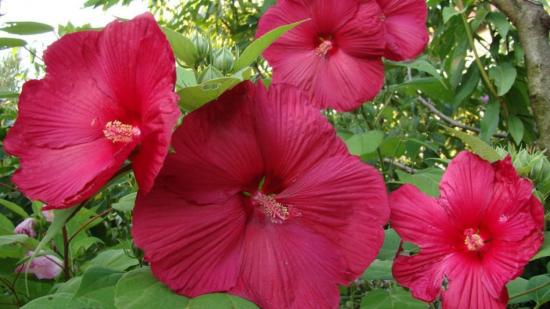
Diseases are usually caused by care errors:
- lack of moisture causes leaves and buds to wilt and fall off
- the falling of new leaves indicates problems with the root, which can cause stagnation of moisture at low temperatures
- leaf lightening occurs when there is an excess of calcium or chlorine, iron deficiency, or watering with hard water; you need to add iron in chelated form, following the instructions
Some herbaceous varieties wither by winter, the stems almost completely die off, leaving small green stems at the roots. By the next season, new shoots appear. This should not be a cause for concern.
Benefits and applications in cooking and traditional medicine
Residents of countries where hibiscus traditionally grows use all parts of the plant for food - flowers, ovaries, stems, leaves and roots. In European culture, tea made from petals is known - hibiscus, a tonic vitamin drink. Fried and ground leaves are added to soups and salads, they give dishes a aroma reminiscent of sesame.
Components that form the chemical composition hibiscus, are beneficial for human health:
- replenish the need for vitamin C, increase immunity
- stimulate metabolism, improve the functioning of the excretory system, help cleanse the body
- have antioxidant, antispasmodic, laxative, antiparasitic effects
- help with insomnia and alcohol poisoning
- increase appetite and promote weight loss
In folk medicine, compresses from parts of the plant are used to treat boils, ulcers, and burns.
Video about the propagation of swamp hibiscus:

